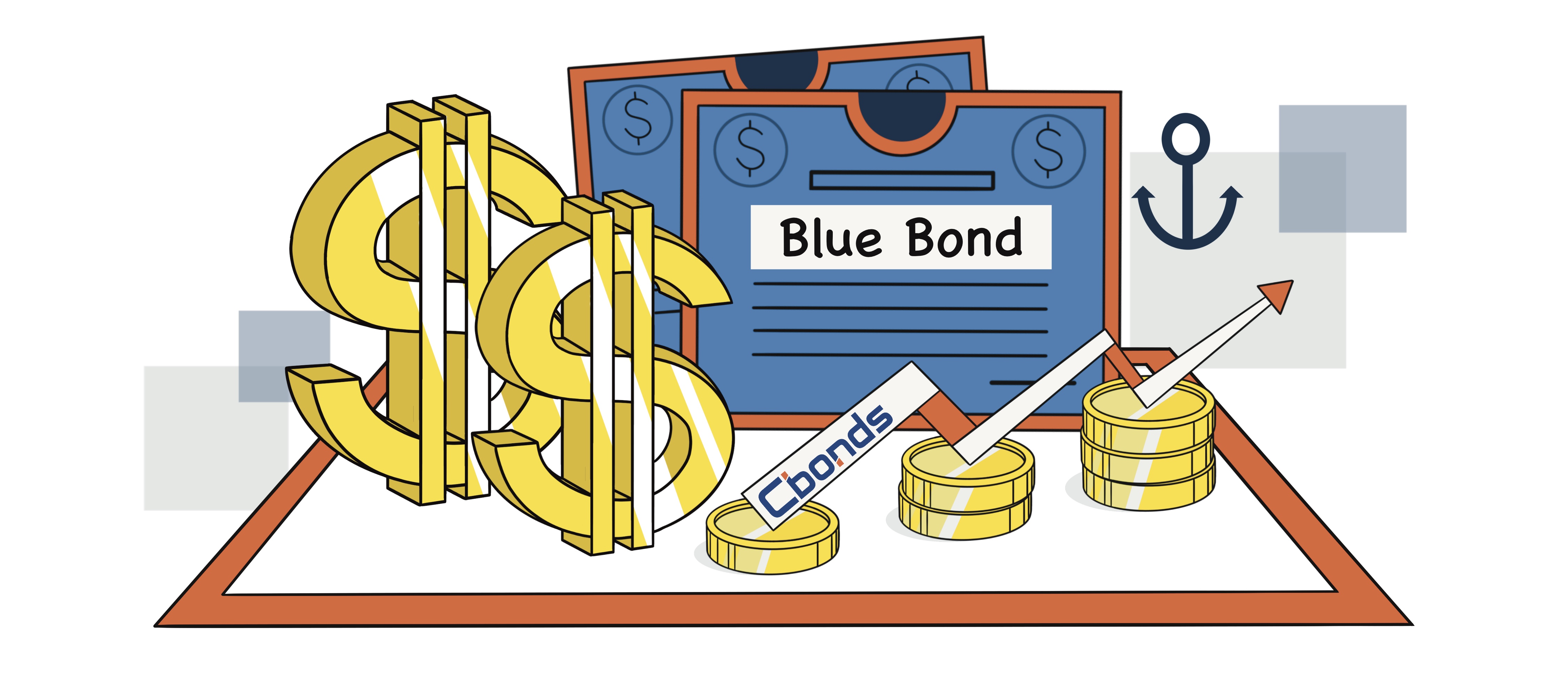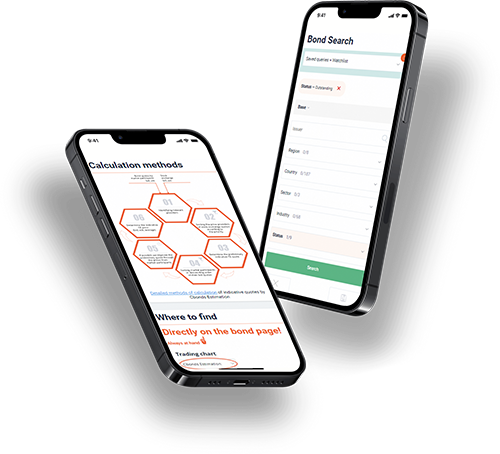Glossary
Blue Bond
What is a Blue Bond?
A Blue Bond is a financial instrument operating similarly to green bonds but with a specific focus on sustainable marine and ocean conservation initiatives while also promoting economic growth. These bonds, often issued by coastal nations (e.g. Gabon, 6.097% 1aug2038, USD), harness the international capital markets to raise funds specifically for projects aimed at preserving and responsible usage of marine resources. Blue bonds play a significant role in financing marine conservation and climate adaptation projects, establishing and maintaining marine protected areas, sustainable fisheries, and coastal protection. They enable organizations and investors to play an active role in addressing the environmental challenges faced by oceans and promote sustainable development within the blue economy.

Why are Blue Bonds issued?
Blue Bonds are issued to address a range of critical challenges facing oceans and marine environments. Here are some of the primary reasons why Blue Bonds are issued:
-
Water and Waste Management. Contamination of the oceans because of wastewater and the dumping of plastic waste poses a significant threat to marine ecosystem. Blue Bonds provide an opportunity to finance projects that improve water and waste management along coastal areas. These projects aim to reverse or offset the harmful effects of human activities on the ocean.
-
Energy Production. Blue Bonds support the development of clean and renewable energy sources, such as wind farms located in open seas. Wind energy generated from offshore locations meets the increasing global demand for clean and sustainable energy production. Investing in these projects helps reduce the reliance on fossil fuels and mitigates the environmental impact of energy generation.
-
Maritime Transport. The maritime transport sector is crucial in the blue economy, facilitating global trade. However, it also generates greenhouse gas emissions that need to be reduced to protect the environment. Blue Bonds provide funding for research and technology development aimed at making maritime transport more environmentally friendly. This includes innovations to decrease emissions and improve the sustainability of the shipping industry.
-
Investment in Blue Economy Activities. Blue bond proceeds facilitate investments in businesses and activities related to the blue economy. This encompasses many initiatives, including sustainable tourism, aquaculture, and coastal infrastructure development. These investments aim to strike a balance between economic growth and environmental sustainability.
-
Sustainable Fishing Industry. A significant portion of blue bond proceeds is directed towards transitioning to a sustainable fishing industry. This includes financing initiatives that promote responsible and environmentally friendly fishing practices. These projects may improve fishery management, reduce overfishing, and protect marine biodiversity.
-
Extension of Protected Marine Areas. Blue bonds often support efforts to extend and maintain marine protected areas (MPAs) around coastal nations. These areas serve as crucial habitats for marine life and contribute to biodiversity conservation. The funds from blue bonds can be used to establish new MPAs and enhance the protection of existing ones.
-
Support for Coastal Communities. Blue bonds often benefit local communities by creating economic opportunities and improving livelihoods. Projects funded by blue bond proceeds may include skills training, job creation, and community development initiatives that directly benefit residents of coastal areas.
-
Promotion of Sustainable Use. The funds raised through blue bonds emphasize the sustainable use of natural resources from the ocean. This entails responsible and well-managed exploitation of marine resources to ensure their availability for future generations while supporting economic growth.
Issuers of Blue Bonds
-
Low-Income Coastal Nations. Low-income countries often issue blue bonds that heavily depend on their oceans and marine resources. These nations may face challenges with poor credit ratings and increased vulnerability to extreme weather events, which can deter conventional investors. However, blue bonds give these countries a unique avenue to secure financing for sustainable marine projects. For instance, the Seychelles’ first blue bond is an excellent example of a bond issued by a coastal nation. This bond includes a commitment to transparent reporting on fund utilization and project impact. It adheres to the International Capital Markets Association’s (ICMA) green bond principles and has received certification from the Climate Bonds Initiative. This is the world’s first sovereign blue bond.
-
Development Banks. Development banks, such as the Asian Development Bank (ADB) can be crucial in supporting blue bond issuances (e.g. Asian Development Bank (ADB), 2.1525% 10sep2031, NZD (Blue Bonds) and Asian Development Bank (ADB), 1.8% 10sep2036, AUD (Blue Bonds)). These institutions may provide policy-based guarantees, technical assistance, or other forms of support to enhance the attractiveness of blue bonds. By collaborating with sovereign issuers, development banks help mitigate risks and make blue bonds more investable.
-
Banks and Corporations. While sovereign blue bonds are significant, banks and corporations can also issue blue bonds (e.g. Nordic Investment Bank (NIB), 0.1% 13oct2025, SEK and Maruha Nichiro, 0.55% 2nov2027, JPY (1st)) to finance their own marine-related projects or initiatives. These entities may be vested in ocean conservation, sustainable fisheries, or other aspects of the blue economy. By issuing blue bonds, banks and corporations can raise funds for projects that align with their sustainability goals.
Pros and Cons of Blue Bonds
Pros
-
Sustainable Marine Finance. Blue bonds provide a dedicated source of financing for projects related to ocean conservation, sustainable fisheries, and marine protection. This enables coastal nations to access capital markets and secure funding specifically for initiatives supporting their marine ecosystems’ well-being.
-
Environmental Impact. Blue bonds prioritize positive environmental outcomes, making them a powerful tool for addressing critical issues such as plastic pollution, overfishing, and the protection of marine biodiversity. They contribute to the long-term health and resilience of marine ecosystems.
-
Economic Growth. By investing in sustainable projects through blue bonds, coastal nations can stimulate economic growth, create jobs in coastal communities, and support sustainable livelihoods. This aligns with the broader concept of the blue economy, which seeks to balance economic prosperity with environmental stewardship.
-
Reduced Dependency on Harmful Practices. Blue bonds encourage the transition away from harmful practices that negatively impact the marine environment, such as unsustainable fishing and inadequate waste management. This shift towards sustainable practices benefits both the environment and future generations.
-
Access to Capital Markets. Issuers of blue bonds, such as coastal nations, gain access to international capital markets, allowing them to raise significant funds from institutional investors, international investors, and the private sector. This financial access can be crucial for financing large-scale marine projects.
Cons
-
Sustainability Challenges. One of the primary challenges of blue bonds is ensuring the long-term sustainability of the financed projects. Many projects may not be self-sustainable and may require ongoing funding, which can strain government budgets over time.
-
Dependency on Beneficiaries and Polluters. The financial success of blue-bond-funded projects often depends on levying charges or fees on beneficiaries or polluters. This reliance on external funding sources can be unpredictable and may lead to challenges in generating sufficient revenue to sustain the projects.
-
Complex Funding Models. The need to generate revenue through charges or fees can result in complex funding models, which may be challenging to implement effectively. Balancing the financial burden between beneficiaries and polluters while ensuring project viability can be delicate.
FAQ
-
How do blue bonds contribute towards climate change adaptation?
Blue bonds contribute to climate change adaptation by financing projects that address the impacts of climate change on marine ecosystems and coastal communities. These projects may include initiatives to protect coastal countries from rising sea levels, extreme weather events, and efforts to mitigate the effects of ocean acidification and temperature changes.
-
What is the difference between a blue bond and a green bond?
The blue bond market and green bond market are both segments of the broader sustainable finance landscape, but they serve distinct purposes. Blue bonds are financial instruments designed to raise capital for projects and initiatives aimed at protecting and conserving the world’s oceans and marine ecosystems. These bonds finance activities such as sustainable fisheries, marine conservation, and clean water projects. In contrast, green bonds are issued to fund projects with environmentally friendly objectives, such as renewable energy, energy efficiency, and climate mitigation efforts, but they don’t specifically target ocean-related initiatives. While both blue and green bonds contribute to sustainability, they focus on different aspects of environmental preservation and resource management within the larger framework of responsible finance.
-
Who invests in blue bonds?
Investors in blue bonds include institutional investors, international investors, the private sector, development banks, impact investors, and environmental organizations. They are motivated by both financial returns and a commitment to sustainable marine conservation.
Bond Screener
Watchlist
Excel Add-in
API





















